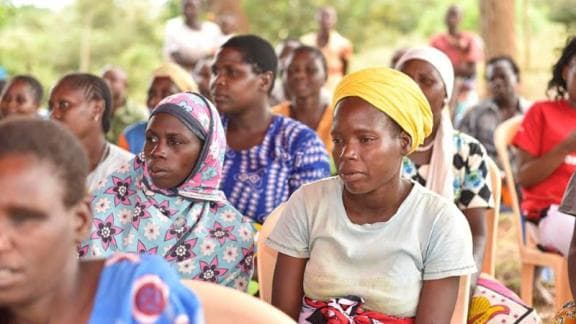Loading News Article...
We're loading the full news article for you. This includes the article content, images, author information, and related articles.
We're loading the full news article for you. This includes the article content, images, author information, and related articles.
A staggering 70% of breast cancer cases in Kenya are diagnosed at advanced stages (III and IV), leading to higher mortality rates and more complex, expensive treatment. This highlights critical gaps in awareness, access to screening, and affordable healthcare.

Seven out of every ten breast cancer cases in Kenya are diagnosed at advanced stages, specifically Stage III and Stage IV, according to data from the Kenya National Cancer Registry 2014-2019. This alarming statistic contributes to Kenya's high breast cancer mortality rates, with approximately 3,100 deaths reported in 2020 from an estimated 6,799 new cases. Early detection is crucial for effective treatment, as breast cancer is more manageable in its initial stages.
Several factors contribute to the prevalent late diagnosis of breast cancer in Kenya. A significant challenge is the lack of awareness among many women regarding breast cancer symptoms and the importance of early screening. Poverty and limited access to healthcare facilities further exacerbate the issue, as many Kenyans cannot afford confirmatory tests or essential treatments, which may be unavailable in public facilities. A study conducted at Kenyatta National Hospital (KNH) from January to December 2018 revealed that financial constraints, insufficient patient awareness, and healthcare practitioner misdiagnosis or strikes significantly delayed diagnosis and treatment. The median time from symptom onset to presentation at KNH was 13 weeks, and from presentation to diagnosis was 17.5 weeks.
The Ministry of Health, in collaboration with county governments and partners, is intensifying awareness campaigns and improving access to screening services. The Afya Dada Project, for instance, has been rolled out in Uasin Gishu County and is expected to extend to Machakos County. This initiative aims to boost prevention and early detection by raising awareness, reducing stigma, improving access to screening and treatment, and equipping frontline health workers. Organisations like Reproductive Health Network Kenya (RHNK) also conduct outreach programs, offering free screenings and educational workshops in marginalised communities.
President William Ruto has championed the Linda Jamii initiative as a more inclusive upgrade to the previous Linda Mama program. While Linda Mama, introduced in October 2016 by former President Uhuru Kenyatta's administration, focused on providing free maternal healthcare services to expectant women, Linda Jamii expands coverage to entire households, including the expectant mother, husband, and other children. Linda Mama was credited with increasing hospital deliveries and improving maternal and child health outcomes. However, it faced challenges, including a reported debt of Sh5.6 billion when the Kenya Kwanza administration took office, as stated by Health Cabinet Secretary Aden Duale on September 30, 2025.
Linda Jamii, launched in June 2025 under the Social Health Authority Insurance Programme, covers antenatal care, delivery, postnatal care, essential newborn services, and advanced services like Intensive Care Unit (ICU) and High Dependency Unit (HDU) for both mother and infant. President Ruto emphasised that Linda Jamii builds on the lessons learned from Linda Mama, aligning with the government's Universal Health Coverage (UHC) agenda to ensure all Kenyans can access quality healthcare without financial hardship. The new scheme significantly increases benefits, offering between Sh10,000 and Sh30,000 per enrollee, compared to Linda Mama's Sh2,000 to Sh2,500. The number of beneficiaries under the Social Health Authority (SHA) has reportedly grown from 7 million under the defunct National Health Insurance Fund (NHIF) to 26.5 million.
The high rate of late breast cancer diagnosis in Kenya has severe implications, including increased mortality, more aggressive and costly treatment regimens, and a significant burden on patients and the healthcare system. The challenges in accessing affordable healthcare and adequate screening facilities disproportionately affect vulnerable populations. While initiatives like Linda Jamii aim to broaden health coverage, their effective implementation, clarity on timelines, costs, and safeguards are crucial for success. Analysts suggest that these developments could influence near-term public debate and policy execution.
Stakeholders will be closely monitoring the rollout and impact of the Linda Jamii program, particularly its ability to address the existing gaps in cancer screening and treatment access. The effectiveness of awareness campaigns and the strengthening of healthcare infrastructure, especially in rural areas, will be critical in improving early detection rates for breast cancer.